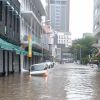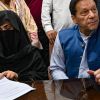
As Mauritius is celebrating the 50th anniversary of its independence, it befits the commentariat to assess how its economy has grown over the past five decades. This government says every year that the Mauritian economy will take off on the basis of an elusive 4 per cent growth. Yet, this figure is not the yardstick of economic take-off, which happens when real output per capita increases drastically. Our policymakers make an abusive use of the word 'take-off' so much that they do not have the slightest idea of where the economy stands.
Economic take-off was conceptualised by the American economist Walt Rostow in his book The Stages of Economic Growth (1960). Every nation goes through five stages of economic growth to reach its highest degree of economic development. They centre around the 'take-off', preceded by 'preconditions for take-off', and followed by 'the drive to maturity' and subsequently by 'high mass consumption'.
The economy of the newly-independent Mauritius set the stage for growth between the beginning of the 1970's and the mid-1980's, took off in the decade 1985 to 1995, sustained its growth till around 2010 and then grew at a moderate pace, fuelled largely by consumption. This sequence of economic development does not fit exactly with Rostow’s model, but the latter can shed light on the successful path taken by the Mauritian economy.
Mauritius was a traditional society, which corresponds to Rostow’s first stage of growth: a subsistent economy with intensive labour that allocates a big proportion of its resources to agriculture and where output could be increased only through expansion of land area under cultivation. Fatalism prevails in such a society, and it was reflected in James Meade’s thinking that not much economic progress was possible for the Mauritian people and for their future generations.
The pre-conditions for take-off emerged after independence when political sovereignty brought about a change in Mauritians’ attitudes towards risk-taking and profit-earning. A class of entrepreneurs appeared, mobilising savings and investing in new enterprises. Agriculture became more mechanised. Increase in agricultural incomes led to industrial investment and to the development of manufacturing. The traditional society persisted side by side with modern economic activities. The adaptability of the labour force and the construction of infrastructure underpinned this second stage of growth foundations for economic transformation.
The 'take-off' stage is a short period of intensive growth which, according to Rostow, covers two decades. In the case of Mauritius, it can be said that it lasted one decade (1985-1995) in which the economy grew strongly (by more than 8.0 per cent in 1986 and 1987). Real output per capita (the living standards) rose while the proportion of investment to national income increased (from 18 per cent in 1984 to 30 per cent in 1994). Productivity levels surged with the enhanced use of technology (capital productivity by 10.6 per cent, and multifactor productivity by 10.8 per cent, from 1983 to 1987). New types of enterprising men came forward. The manufacturing industry played a bigger role than agriculture in the economy, and a large share of profits yielded by industries was reinvested in new plants. With industrialisation, there was greater urbanisation: almost 44 per cent of the resident population was urban in July 1991. The forces making for economic progress came to dominate the society, and growth became its normal condition. The structure of the economy changed (from a classic plantation type monocrop economy to an industrial economy and then to a service economy), thus opening the way towards self-generating economic growth.
The drive to maturity occurs when the economy becomes mature and shows self-sustained growth. True, Mauritius is still today a developing economy. As from the mid-1990s though, its initial key sectors (sugar and textile), which had powered the economic 'take-off', started shrinking, and industry became more diverse. In parallel, there was a succession of new rapidly-growing sectors, from tourism through financial services, Global Business, and information and communication technology to business process outsourcing. Progressively integrated into the world economy, Mauritius was more exposed to external shocks. Thus economic growth, which averaged 6 per cent during the 'take-off' period, posted an average annual rate of 5 per cent over the subsequent 15 years.
At the turn of the decade, economic growth trended down to below 4 per cent. Its moderate pace is sustained by the expansion of a middle class of consumers. The age of high mass consumerism has not yet arrived for Mauritius, at least in respect of consumption of luxuries on a mass scale. Nonetheless, the country has the attributes of a consumerist society: consumer sovereignty reigns; consumption transcends basic food, clothing and shelter; there are more mobile phones in circulation than inhabitants; and every family wants to own a car and a satellite dish. As a percentage of gross domestic product, household consumption expenditure was as high as 74.7 per cent, and gross domestic saving as low as 10.4 per cent, in 2015.
Historically, according to Rostow, maturity is generally attained 40 years after the 'take-off'. It can be said that the Mauritian economy is still today at this stage of development, for it has yet to demonstrate its ability to move beyond the traditional industries, to produce at home goods that are imported, and to find its place in the international economy. To do that, the country needs to revise its institutions urgently in such a way as to support rather than retard the growth process.

Notre service WhatsApp. Vous êtes témoins d`un événement d`actualité ou d`une scène insolite? Envoyez-nous vos photos ou vidéos sur le 5 259 82 00 !

















![[Info Soirée] : Grosse affluence en ce dernier weekend avant Noël](https://files.defimedia.info/sites/default/files/styles/square_thumbnail/public/info_soiree_final_thumbnail_23.jpg?itok=oUDp3exq)



